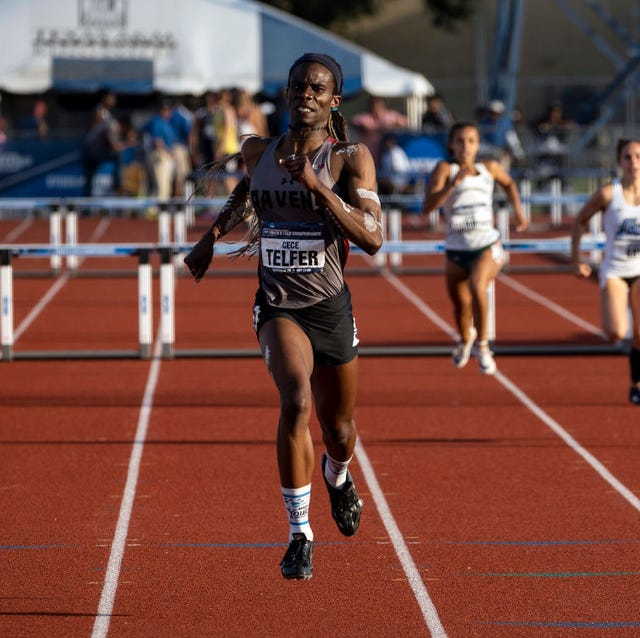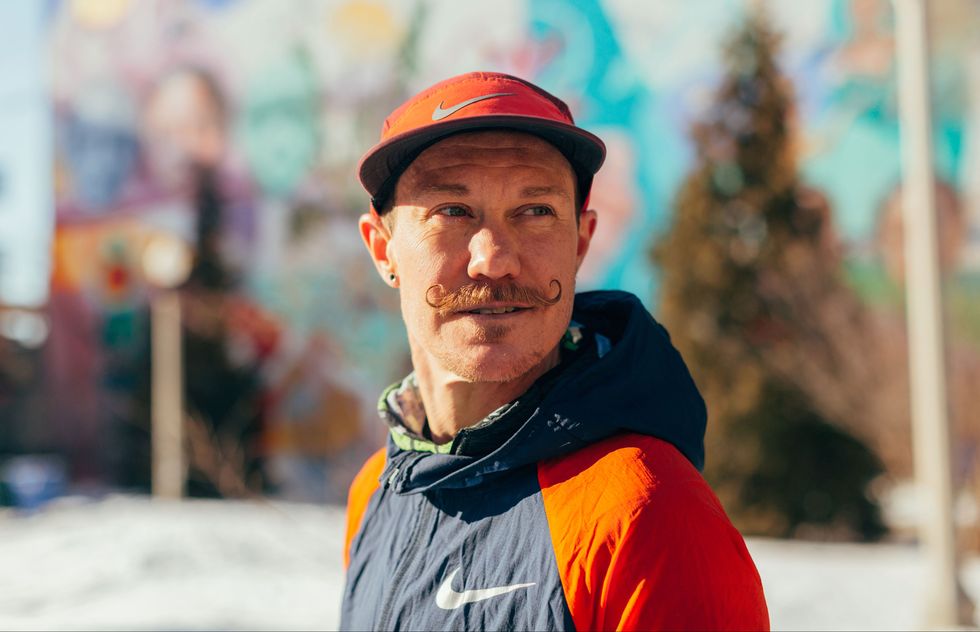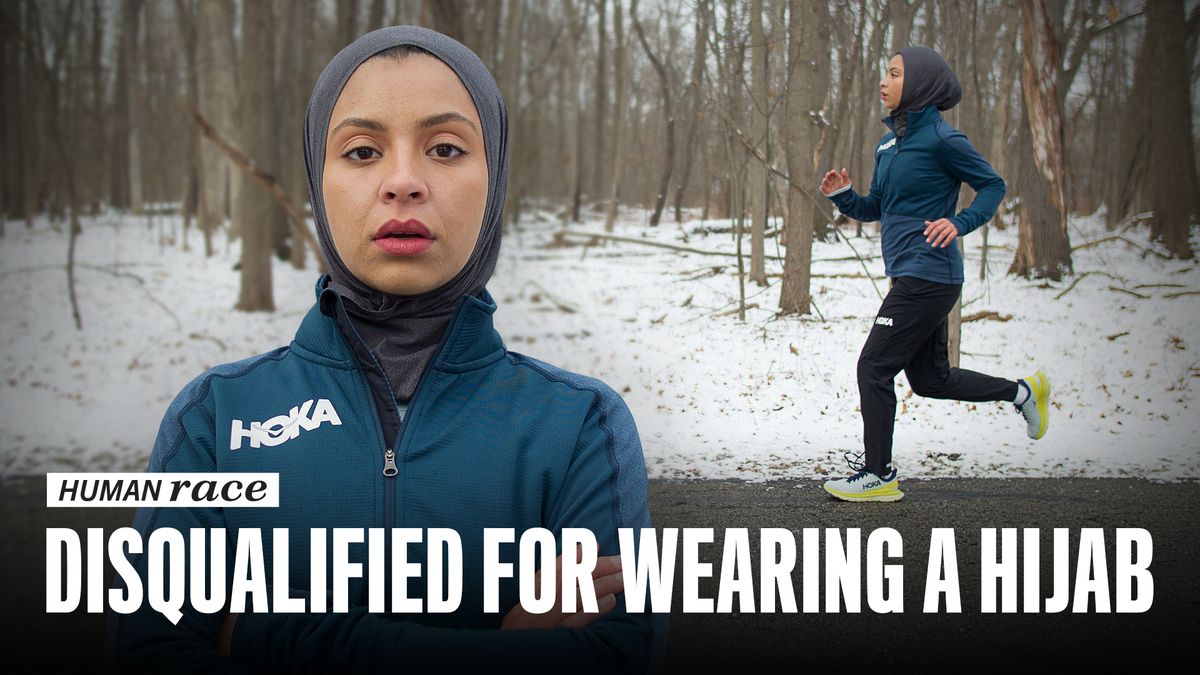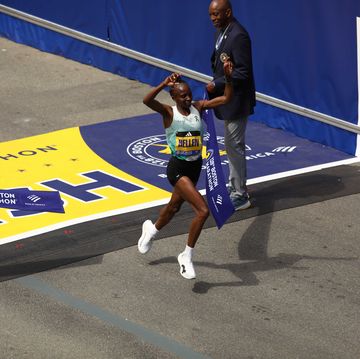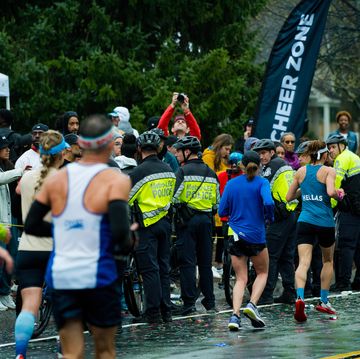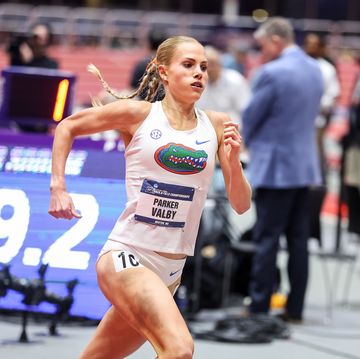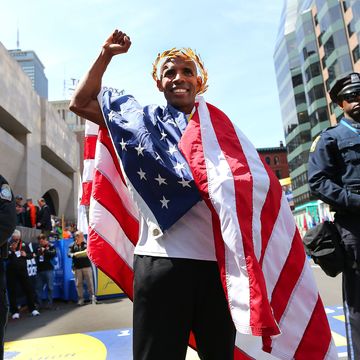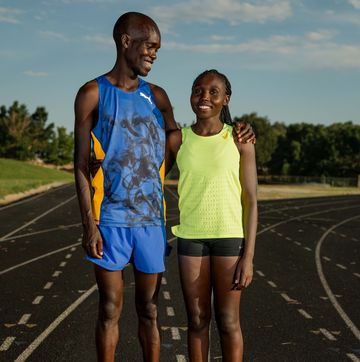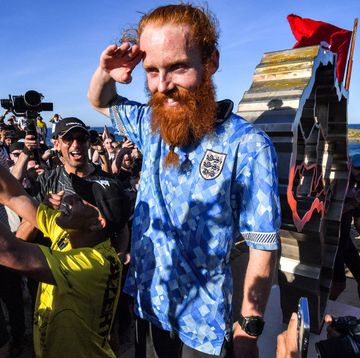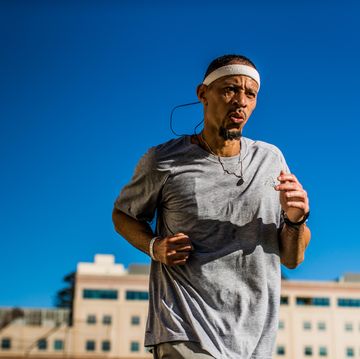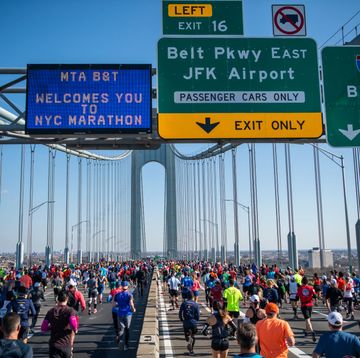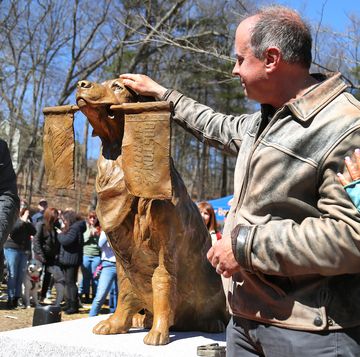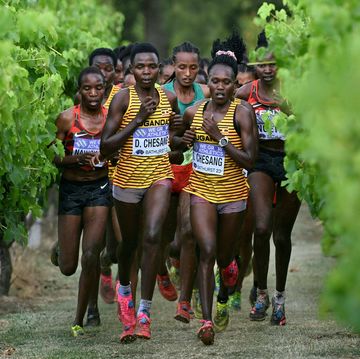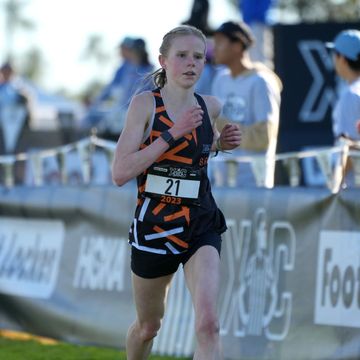In 2021, more NCAA athletes have had the opportunity to compete after shortened or canceled seasons because of the coronavirus pandemic last year. But for transgender athletes, a new challenge is confronting them across the country that could impede or outright stop their opportunity from participating in their desired sport. For transgender runners, one of the biggest hurdles they’re facing is getting the general public and lawmakers to understand that they’re not out there sweeping the podiums of all (or even most) of the races they’re lining up for—they just want the chance to run.
In the latest challenge, Mississippi passed a new bill last week that bans transgender women and girls from competing in both youth and collegiate athletics. Idaho passed a bill in 2020, which was blocked by a federal judge, and South Dakota is nearing its own law. Similar laws in more than 20 other states are expected to follow after President Joe Biden signed an executive order in January extending protections against discrimination to gender identity and sexual orientation.
Many supporters of these bills say they want to protect opportunities for girls and women in sports, including things like access to scholarships at colleges and provide fairness to female competitors. “I will sign our bill to protect young girls from being forced to compete with biological males for athletic opportunities,” tweeted Mississippi Gov. Tate Reeves on March 4.
In response to the string of new laws on the political agenda, more than 500 collegiate athletes from across the country sent a letter to the NCAA last Wednesday, demanding that championships and events be pulled in states that have passed or are considering passing laws that effectively ban transgender women and girls from participating in sports. (NCAA men’s basketball tournament games were originally scheduled to be played at Boise State this year, but all games have been moved to Indianapolis because of the COVID-19 pandemic. South Dakota is set to host regionals or finals in several Division II sports and Division I men’s ice hockey.)
In the letter to NCAA President Mark Emmert and the Board of Governors, signed by athletes from at least 85 schools across multiple sports, the athletes address the need for all to be provided safety and inclusion.
We, the undersigned NCAA student-athletes, are extremely frustrated and disappointed by the lack of action taken by the NCAA to recognize the dangers of hosting events in states that create a hostile environment for student-athletes. HB500 in Idaho, even with the current injunction, is still is an incredibly harmful bill that sets a dangerous precedent of subjecting all women athletes to potential invasive gender verification tests while also effectively banning transgender women athletes from competition. Multiple states are following suit this year and have already introduced bills similar to Idaho’s HB500. You have been silent in the face of hateful legislation in states that are slated to host championships, even though those states are close to passing anti-transgender legislation.
To compete in sports, these bills often require an athlete to provide proof of their gender via a doctor’s exam, genetic test, or hormone test to verify testosterone levels if an athlete’s gender is called into question. These laws also, in effect, could overrule NCAA guidelines that do allow for transgender athletes to compete.
Lindsay Hecox, 20, is a sophomore at Boise State University who is part of the lawsuit challenging the Idaho bill and fighting for her right to compete on the school’s cross-country team. While Hecox isn’t allowed to participate with the team without being on it, per NCAA rules, the coaches have provided her a weekly training schedule to follow on her own. She occasionally runs with other students as part of an informal on-campus running club that isn’t associated with any teams or intramural sports.
“These laws diminish trans women to being just men pretending to be women, and these lawmakers have no idea about trans vocabulary and what it actually means,” Hecox told Runner’s World in 2020. “Their argument is that trans women have the same ability as cisgender men, which is not accurate. I’ve lost so much athletic ability (in my transition) and no one really thinks about that or understands that.”
Hecox noted that while it’s been difficult to deal with lessened privacy and negative comments since going public with the lawsuit, it was important for her to become involved to bring attention to the harmful impacts such laws can have on athletes. According to Sports Illustrated, Hecox supports the recent letter to the NCAA.
“The average person doesn’t really understand trans people—they should know that they have a very high rate of mental health issues just because of the fact that society has not really caught up and understood what it means to live a lie for a good portion of your life,” Hecox told Runner’s World. “I really hope that my fellow Boise State runners, if I do end up making the team, would not automatically assume I’m going to beat them.”
What are the NCAA guidelines?
When the NCAA first released a set of policy standards for allowing transgender athletes to compete in 2011, the moment was groundbreaking for a minority group of runners who stood to be excluded without certain protections in place. Now, in 2021, runners and activists say the current policy is outdated and possibly contributing to controversy and discrimination that arises when transgender athletes see successes and wins.
The current NCAA policy on allowing transgender athletes to compete does not require gender confirming surgery or legal recognition of a player's transitioned sex in order for transgender players to participate on a team that matches their identity. However, it does require one year of hormone treatment testosterone suppression before as a condition prior to competing on a female team, though there is no such requirement for male transgender athletes to participate on a men’s team. Athletes assigned female at birth are also still eligible to compete in women’s sports unless or until that athlete begins a physical transition using testosterone.
In an email to Runner’s World, a spokesperson for the NCAA said, “The NCAA believes in and is committed to diversity, inclusion, and gender equity for student-athletes, coaches and administrators. As such, the Association wants to maintain an inclusive culture that fosters equitable participation for all student-athletes.”
“What we’re seeing with the NCAA and the transgender athletes that are participating is they fit right in the range and the testosterone range of cisgender [gender identity matches their assigned sex at birth] female athletes,” says Helen Carroll, an LGBTQ+ sports consultant who helped write the 2011 policy. “So they are playing in a very positive way with their teammates and coaches and opponents, and it’s working quite well.”
However, the NCAA doesn’t monitor these athletes’ testosterone levels in an effort to enforce the policy, which they would have to do with out-of-competition blood tests. This would serve to ease concerns about the need to prevent transgender athletes from having an unfair advantage against their competitors. This is a weakness of this rule, said Joanna Harper, a researcher and medical physicist who published the first study on hormone therapy in 2016. However, the study found that a nonelite group of eight transgender distance runners was no more competitive as women than as men, as transgender athletes faced lessened endurance, speed, strength, and oxygen-carrying capacity, showing that they didn’t have a performance advantage over cisgender women.
With regard to the hormonal supplementation requirements, much of the general public may be surprised to learn that transgender athletes are not opposed to them. Many trans women will stay on hormone therapy for reasons unrelated to sports, but rather because they’re happier and healthier that way, Harper says.
“Some may disagree and believe that they shouldn’t have to undergo hormone suppression and suppressing their biochemistry just to be a part of something that they feel like they belong to,” says CeCe Telfer (shown at the top), a transgender runner who competed at Division II Franklin Pierce University and won a national title in the 400-meter hurdles at the 2019 NCAA Championships. “However, I think that the NCAA has taken the most appropriate, accurate approach and steps into creating that common ground for everybody to be able to participate.”
Chris Mosier, a six-time member of Team USA as a triathlete and duathlete, has also had a hand in reviewing the NCAA policy, as well as policies for national governing bodies, professional sports leagues, colleges and universities over the last few years. For NCAA athletes, Mosier feels it’s time to evolve after a decade.
“When the original NCAA policy came out in 2011, it was one of the first and it really set the stage for inclusion and participation when there wasn't a lot of information available,” Mosier says. “The policy has not evolved as our research and understanding and language has evolved, and it still currently includes terms like transsexualism and gender identity disorder, which are no longer applicable or relevant to creating a policy that works.”
What do transgender athletes think?
According to Mosier, 40, by the NCAA estimates, less than 1 percent of the NCAA’s student-athlete population is transgender, which isn’t surprising, as only about 1 percent of the general United States population is transgender. This demonstrates that a decade after the NCAA enacted its current policy, not only are transgender women not dominating the sport, they are still vastly underrepresented.
“Hundreds of transgender athletes have participated in NCAA sports since the policy has been in place without a problem and without it being controversial,” Mosier told Runner’s World. “There aren’t more transgender athletes now; there are just more people who feel comfortable enough and competent enough and safe enough to express who they truly are and continue to pursue their passions.”
Telfer, 25, currently works as a licensed nursing assistant in Peterborough, New Hampshire, and is hoping to compete for the Tokyo Olympics in the 400-meter hurdles.
“These discriminatory attitudes hurt not only the transgender athletes who are participating but women’s sports as a whole, because whether they’re transgender or cisgender, women will always be questioned about their abilities, with people suspiciously saying they’re too fast, too good, too strong,” she says.
June Eastwood became the first transgender athlete to compete in Division I cross country while running competitively for the University of Montana as a senior before graduating last spring.
“It’s understandable that (cisgender) athletes may be hesitant about competing against me because the science on it is so new and still developing and it's natural for people to want there to be as much competitive equity as possible,” Eastwood says. “But I think that because we don’t have the research right now, we should default to inclusion until we have more research and respond to the research as it comes up and ultimately create better guidelines so that the sport can be both as competitively equitable and inclusive as possible.”
Eastwood, 23, also says that if the NCAA is seeking better inclusion, it needs to have a more diverse array of people when considering its new guidelines. Carroll added that the NCAA is currently working on updating the policy with language for non-binary athletes and scientific research that’s come out since it was first put forth.
Support from their sports, not from the community
“When I came out to my college community and track team, I was ready to come in with my lawyers and fight for the chance to compete as my authentic self,” Telfer says. “I was pleasantly surprised to see that they were waiting for me to come out on my own terms and that they were ultimately very supportive of my journey to be the athlete I am today.”
Even so, Telfer was aware that there would still be athletes and fans watching her compete who were outwardly opposed to her having the ability to be there. As a collegiate athlete, she grew accustomed to tuning the audience out.
“I just had that tunnel vision to just focus on what I was working so hard for, telling myself ‘I'm here. I'm on the blocks, I'm on the line and it's time to execute,’” she says.
Eastwood shared that sentiment. She transitioned socially while still competing on the men’s team before medically transitioning and running on the women’s team for her final year of eligibility.
“Both teams were very supportive and understanding and it was as good an experience as I could have had, given the circumstances,” she says.
However, she noted that she had a difficult time avoiding negative online commentary while competing in college.
“I’ve seen just about every negative thing that somebody could say about me and it’s been hard to not let it affect me,” she says. “It’s even difficult now when people are still using me and commenting about me in these negative ways, and I’m no longer competing as a college athlete.”
LGBTQ+ individuals often face unique challenges, including self-acceptance and acceptance by others, health and safety, and limited legal protections, which is why the NCAA operates its Office of Inclusion. The office serves to provide education and resources that support LGBTQ+ students and the coaches and administrators who teach and lead them in athletics departments across the country.
Mosier believes that while the NCAA has policies to allow transgender student-athletes to play sports, it doesn’t necessarily have a system in place to fully support them when outsiders attack, whether it’s in person or online. The new state laws are further fanning the flames and why he supports the NCAA athletes protesting these laws.
In 2016, the NCAA created an anti-discrimination statement and guidelines that would require host sites of NCAA events to meet certain qualifications—among them, host sites must “demonstrate how they will provide an environment that is safe, healthy, and free of discrimination, plus safeguards the dignity of everyone involved in the event.”
Mosier thinks with its lack of clear and decisive action at this moment, the NCAA is not upholding the values it says it has.
“Banning athletes like me, forcing athletes to undergo invasive examinations, and telling people like me that we do not belong in sports is not a measure of fairness or respect,” Mosier says.
That’s why in 2013, Mosier founded transathlete.com, which serves as a resource to make sports more inclusive and to help athletes and their families, as well as coaches and athletic organizations, understand what the policies are in sport and the best ways to become involved.
Telfer said one area that non-transgender athletes and fans are largely unaware of is the added safety measures NCAA officials may take to protect these athletes at competitions, such as planning her travel, making sure her arrival and departure times did not coincide with those of other athletes, and having incognito security guards surrounding her. Telfer’s coaches didn’t inform her of these measures until after the fact to allow her to focus on the competition and avoid harassment.
“A lot of other athletes, i.e. cisgender athletes, don’t always have to worry about being safe when they go out in public or at track meets,” Telfer says. “In this regard, I believe the NCAA did a very good job of keeping certain situations under control and not letting them distract me while competing.”
Eastwood is currently pursuing her master’s degree in environmental philosophy at the University of Montana while also participating in local trail races with the goal of completing a 50-miler in the future. She hopes to eventually use her degree and experience to make outdoor communities more inclusive of LGBTQ+ people.
“My hope is that all people can go in open to the experiences of other people, not just in sports, but in all walks of life,” Eastwood says. “I think that in meeting somebody like me or other trans athletes, this would help them realize that what they’re reading that’s targeted against us, isn’t necessarily completely well-founded.”

Emilia Benton is a Houston-based freelance writer and editor. In addition to Runner's World, she has contributed health, fitness and wellness content to Women's Health, SELF, Prevention, Healthline, and the Houston Chronicle, among other publications. She is also an 11-time marathoner, a USATF Level 1-certified running coach, and an avid traveler.
